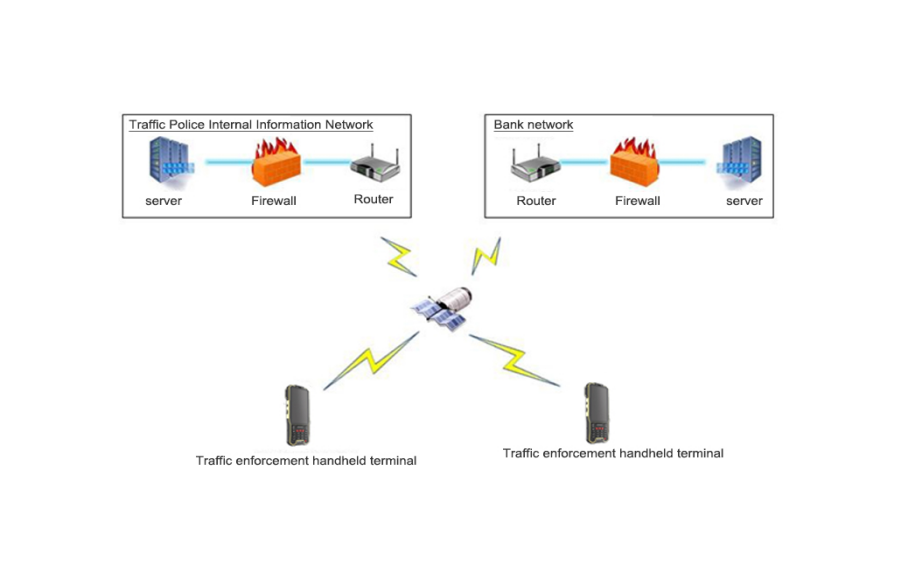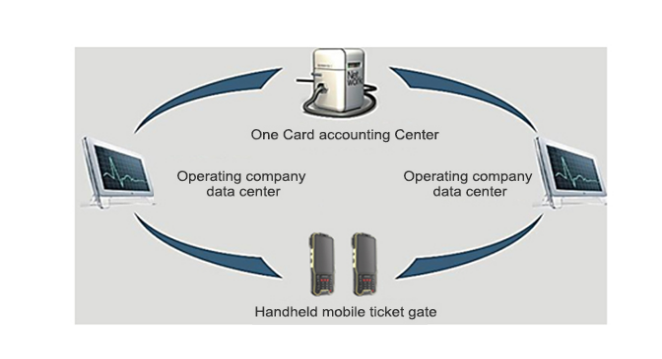
 (86)15602985126
(86)15602985126 
Vehicle violation information can be entered anytime and anywhere, and each traffic police is assigned one. The system is transmitted to the illegal system via the wireless network. After encountering illegal vehicles, you can enter on the spot, directly deal with violations, and print a ticket to facilitate traffic police enforcement, so that law enforcement is more deterrent. Taking the internal information network of the Traffic Management Bureau as the core, XPDA Traffic Law Enforcement (hereinafter referred to as XPDA) as the execution tool, combined with the bank's electronic payment service, provides comprehensive information services for the road duty police, and expands the information management of the traffic control department. range. Utilize modern information management technology, strengthen the institutionalized electronic construction of law enforcement, improve the processing efficiency of various information in the traffic control department, and reduce some unavoidable management loopholes in traditional management methods.
First, highway inspection management solutions
In order to promote the standardization of the operation and management of the expressway service area, the work procedures of the service personnel of the service area shall be standardized, and the goal of “complete facilities, beautiful environment and standardized service” in the service area shall be realized. The highway inspection management system, on the one hand, carries out on-site information input and photographing of the inspection, scoring, and existing problems of the inspection points during the inspection process, and returns the management system in real time;On the other hand, system administrator can automatically patrol the patrol task in the system, and provide the patrol personnel with a standardized patrol result record form. The patrol personnel fill in the form directly according to the check result and automatically generate daily routines. Check the maintenance table, and in the future, you can summarize, analyze, and export the daily inspection and monthly inspection.
Handheld mobile terminal patrol operating system
Inspector mobile operating terminal system, main functions:
Basic data reception ------ Device patrol standard, facility data, personnel status, task information and other information are transmitted from the application server to the handheld mobile terminal.
Return inspection results ------ Mainly return the inspection results from the handheld mobile terminal to the background management system. Handheld mobile terminals (and RF electronic tags use high-tech RF tag reading and writing and GPRS wireless transmission functions as one of the high-tech handheld mobile terminals to meet the requirements of equipment under harsh environments and operating conditions. The ISO14443A protocol is available in both general and metal-resistant labels. Labels package are available in the form of attach label and tag label. The use of metal-resistant labels is intended to provide better resistance to metal interference at certain inspection points.
Introduction to the inspection process
1. The patrol personnel account is logged in, and the current patrol task assigned by the background management system and the automatically generated patrol result record table are downloaded.
2. According to the inspection task, the patrol points of the RF tag positioning are inspected, scored, recorded, and the problem is taken at the scene. The patrol results are transmitted back to the back-end system in real time through GPRS.
3. The handheld mobile terminal checks whether the patrol task has been completed. If there is any omission, the handheld mobile terminal will have a warning tone and a dialog box prompt, and the last patrol result cannot be scored.
4. The handheld mobile terminal patrol operation system integrates the results of the scores of each patrol point, evaluates the comprehensive score, and returns the host, that is the patrol inspection ends.
Second, the traffic police mobile law enforcement solution
The project mainly relies on the GPRS network to implement traffic police on-site enforcement through handheld terminals, including on-site inquiries, on-site penalties, and on-site printing of fines. The traffic police is connected to the GGSN of the mobile GPRS network through a dedicated line, and a dedicated access APN point is set for the traffic police on the mobile GGSN network element, thereby forming a wireless virtual private network between the handheld mobile law enforcement equipment used by the traffic police and the internal network of the traffic police detachment. The (VPN) channel solves the requirements of the internal network security and data privacy proposed by the traffic police. The implementation of “Mobile Traffic Police Enforcement” solved the problem that the party and government system could not be deeply integrated with the mobile office due to security considerations for a long time. The establishment of VPN on GPRS made mobile office possible.

Third, the city card system solution
Handheld mobile terminal application in the field of city card. The role of handheld mobile terminals in ticket checking, ticket checking and auditing in urban bus routes. Another important use of handheld mobile terminals is that bus companies can monitor the work of various bus lines through hand-held mobile terminals and supervise the work of ticket sellers. At the same time, the ticket seller can also check the passengers through the handheld mobile terminal, or fill in the ticket processing.
According to the way of data collection, there are usually two application modes:
1. Use the data collector to collect the transaction records of the handheld mobile terminal. When the bus returns to the garage, the staff will use a data collector to download the records in the hands of the conductor handheld mobile terminal through the RS232 or infrared interface. The data collector, when the staff downloads the transaction records of all the trains on the day to the data collector, uploads the data to the clearing center.
2. Upload transaction records via GPRS network. In urban and rural bus lines in some cities in China, some lines of vehicles do not return to the garage or data collection points, which will cause difficulties in data collection. At the same time, the ticket seller will take the handheld mobile terminal to the data collection point after work, and increase the ticket seller’s working time. In this case, the GPRS module of the handheld mobile terminal can make the transaction record wirelessly transmitted to the data collection point or clearing center at any time, and is not limited by the distance. According to this situation, our company embeds the GPRS module into the card handheld mobile terminal, which can quickly upload the transaction record of the day to the data collection point or clearing center, which perfectly solves the above problem.

Other applications:
The City One Card System is a cross-industry and cross-disciplinary system that encompasses transportation systems, utilities, real estate leasing, residential properties, parking lots, small-scale consumption, and many other industries and sectors. Different industries and fields have different requirements for machines. Handheld mobile terminals have also been applied in the following fields:
1. Urban transportation: In addition to the bus IC card charging system, it can also be used as a terminal or rail transit consumer machine or ticket inspection machine.
2. Utilities: As a data collector, the meter reader collects the data of the three meters through the handheld mobile terminal, which is usually used when the cell is not installed with the IC card.
3. Parking fee
4. Small-scale consumption of digital cells: Generally, small-sale stores, community shuttles, and entertainment venues in digital communities can use handheld mobile terminals as mobile consumer machines to improve service quality.
5. Park attractions: Handheld mobile terminals can be used as consumer machines in places where wiring is not convenient and there is no power source.